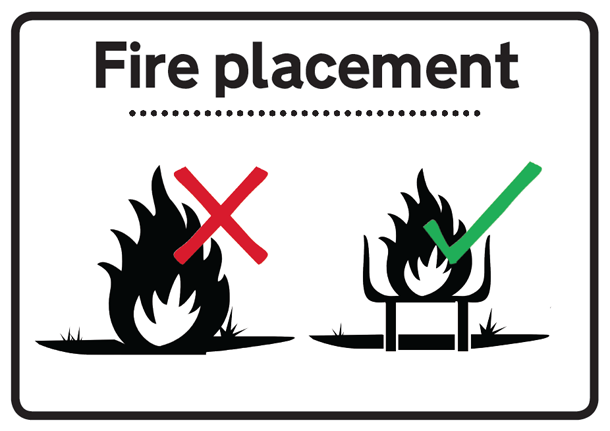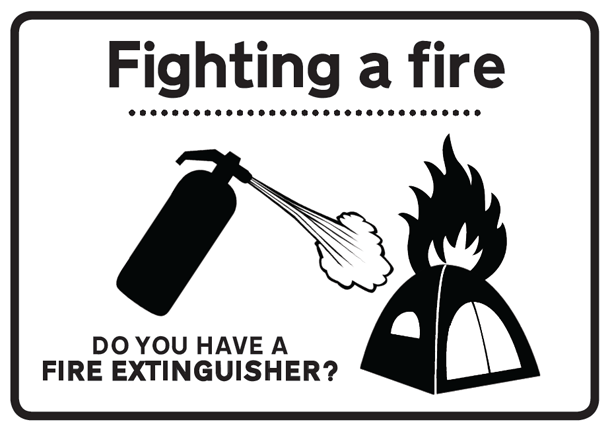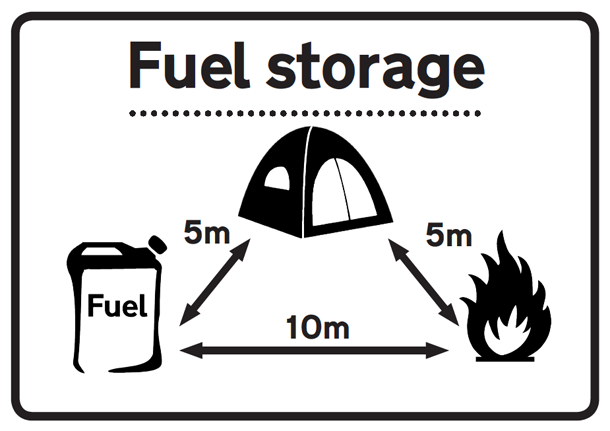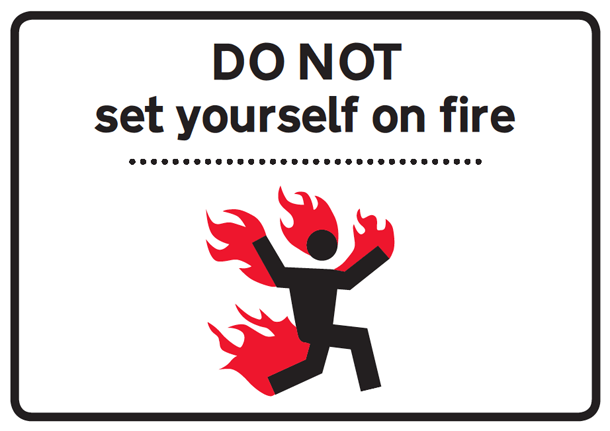BINNEKRING BLOG
Fire safety in your camp
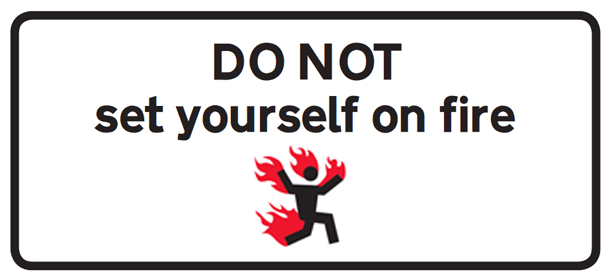
As we’re all preparing for a spectacular AfrikaBurn 2014 in a few short weeks, now is a great time to plan ahead for the fire safety needs of your camp. Obviously, if you have a small camp where you have no fires at all, much of the info provided below won’t apply – but it’s generally a good idea to be familiar with the basics of fire safety, just in case you’re faced with a fire.
So, without further ado, here are the Ten Fire Commandments, as shared with us by our eminently qualified and rather helpful fire experts:
1. Every camping area should have an unobstructed pathway leading out of their site to act as an escape route so campers can evacuate the area in a hurry. This pathway should be a minimum of 1.5 m wide and be free of any obstructions, including tent guy-ropes, camping equipment, and recreational items (bicycles, etc).
2. 1 x 4.5 kg DCP (Dry Chemical Powder) or 1 x 5kg CO2 fire extinguisher should be available for every 8 x 8 m of covered area (e.g.. 4 x medium size tents / awning / gazebo / etc). These fire extinguishers should be placed in a central place, be readily accessible and visible. Make sure that the extinguishers are in date and that their needle in the gauge is in the green.
3. All flammable fuels (gas, petrol, diesel, paraffin) should be stored in a central place in the campsite, under shade and in a location furthest from the sleeping and socialising / fire area. An additional suitable fire extinguisher (such as the ones referred to in Point # 2 above) should be close by.
4. No cooking or camping fire should be left unattended – any fire left unattended will be reported to the Fire Marshalls, who will extinguish it with water.
5. All generators should have a minimum of a 1.5kg fire extinguisher (DCP or CO2) close by.
6. No candles or gas cookers should be used inside any tent.
7. When using a gas cooking appliance, make sure that anything used as a wind-shield is of a suitable material (ie: not cardboard or plastic) and that it’s a safe distance from the appliance. Special care should be taken in windy conditions.
8. Please take special care when using a fire, candles or cooking appliance when there are children in the immediate vicinity.
9. In the case of a small or initial fire, raise the alarm and use the closest fire extinguisher to attempt to extinguish it.
10. In the case of a fire that is well established, raise the alarm and assist in vacating the area.
Thanks for reading up on this – we want you, and all of your fellow campmates, in one piece and safe as can be, so if there are campers you think could use this info, please share this article with them.
And hey, while you’re at it, if you hadn’t read our glorious (and frequently funny) 2014 Survival Guide, please find the time between now and April 28th to dig into it. It’s packed with helpful info that will make your AfrikaBurn experience more enjoyable and safer:
Read our 2014 Survival Guide here.
(thanks to Dane Neil for creating our Health & Safety graphics!)



